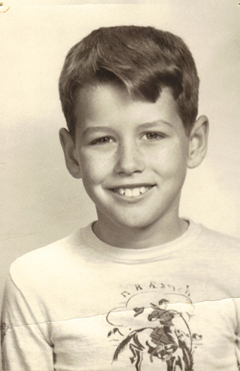Depleted uranium: Tens of thousands of pounds of microparticles of 4 radioactive and highly toxic waste contaminate the Middle East, Central Asia, and the Balkans.
US-made land mines and cluster bombs spread over wide areas of 4 Africa, Asia, Latin America, and the Middle East continue to spread death and destruction even after wars have ceased.
Thirty-five years after the Vietnam War, dioxin contamination is 4 three hundred to four hundred times higher than "safe" levels, resulting in severe birth defects and cancers into the third generation of those affected.
US military policies and wars in Iraq have created severe 4 desertification of 90 percent of the land, changing Iraq from a food exporter into a country that imports 80 percent of its food.
In the US, military bases top the Superfund list of the most 4 polluted places, as perchlorate and trichloroethylene seep into the drinking water, aquifers, and soil.
Nuclear weapons testing in the American Southwest and the South 4 PacificIslands has contaminated millions of acres of land and water with radiation, while uranium tailings defile Navajo reservations.
Rusting barrels of chemicals and solvents and millions of rounds of 4 ammunition are criminally abandoned by the Pentagon in bases around the world.
The United States is planning an enormous $15 billion military buildup on the Pacific island of Guam. The project would turn the thirty-mile-long island into a major hub for US military operations in the Pacific. It has been described as the largest military buildup in recent history and could bring as many as fifty thousand people to the tiny island. Chamoru civil rights attorney Julian Aguon warns that this military operation will bring irreversible social and environmental consequences to Guam. As an unincorporated territory, or colony, and of the US, the people of Guam have no right to self-determination, and no governmental means to oppose an unpopular and destructive occupation.
Between 1946 and 1958, the US dropped more than sixty nuclear weapons on the people of the Marshall Islands. The Chamoru people of Guam, being so close and downwind, still experience an alarmingly high rate of related cancer.
On Capitol Hill, the conversation has been restricted to whether the jobs expected from the military construction should go to mainland Americans, foreign workers, or Guam residents. But we rarely hear the voices and concerns of the indigenous people of Guam, who constitute over a third of the island's population.
Meanwhile, as if the US military has not contaminated enough of the world already, a new five-year strategic plan by the US Navy outlines the militarization of the Arctic to defend national security, potential undersea riches, and other maritime interests, anticipating the frozen Arctic Ocean to be open waters by the year 2030. This plan strategizes expanding fleet operations, resource development, research, and tourism, and could possibly reshape global transportation.
While the plan discusses "strong partnerships" with other nations (Canada, Norway, Denmark, and Russia have also made substantial investments in Arctic-capable military armaments), it is quite evident that the US is serious about increasing its military presence and naval combat capabilities. The US, in addition to planned naval rearmament, is stationing thirty-six F-22 Raptor stealth fighter jets, which is 20 percent of the F-22 fleet, in Anchorage, Alaska.
Some of the action items in the US Navy Arctic Roadmap document include:
Assessing current and required capability to execute undersea 4 warfare, expeditionary warfare, strike warfare, strategic sealift, and regional security cooperation.
Assessing current and predicted threats in order to determine the 4 most dangerous and most likely threats in the Arctic region in 2010, 2015, and 2025.
Focusing on threats to US national security, although threats to maritime safety and security may also be considered. 4
Next Page 1 | 2 | 3 | 4 | 5 | 6
(Note: You can view every article as one long page if you sign up as an Advocate Member, or higher).





